Water for All: A Look at Ipo Watershed Throughout the Years
August 2019
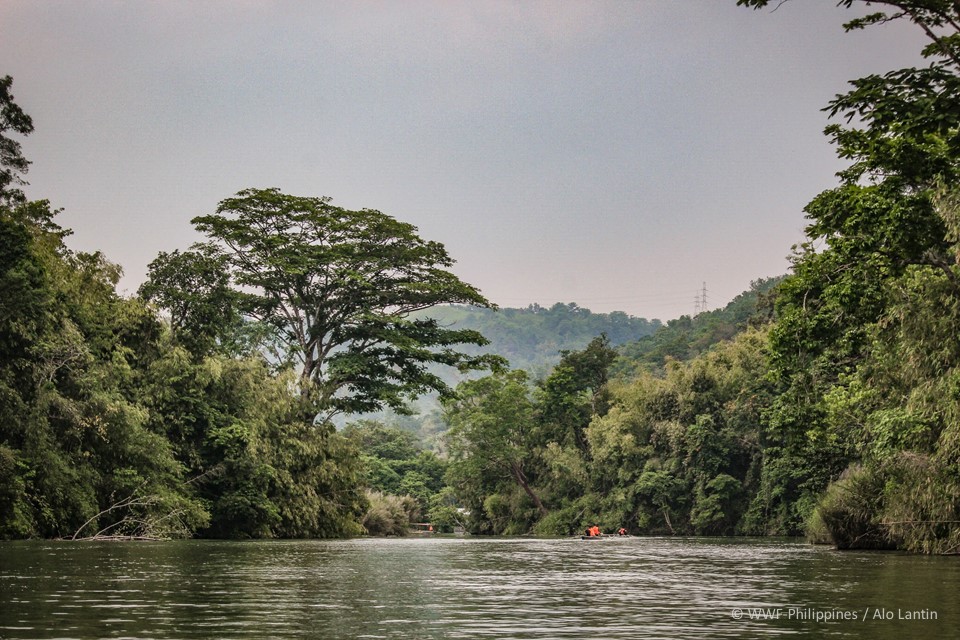
Ipo Watershed, part of the Angat-Umiray-Ipo watershed system, supplies water to 98% of Metro Manila.
Photograph © Alo Lantin / WWF-Philippines
Science runs the show in the conservation of our most crucial watersheds.
Ipo Watershed, part of the Angat-Umiray-Ipo watershed system, is vital to the water security of Metro Manila. Located in Bulacan in the municipalities of Norzaragay, San Jose del Monte and Rodriguez, Ipo Watershed covers a total physical area of 7,236 hectares and is the source of water of around 98% of the National Capital Region. A vital leg in the machinery that supports millions, Ipo Watershed is a crucial spot both for conservationists and for anyone who calls the surrounding area home.
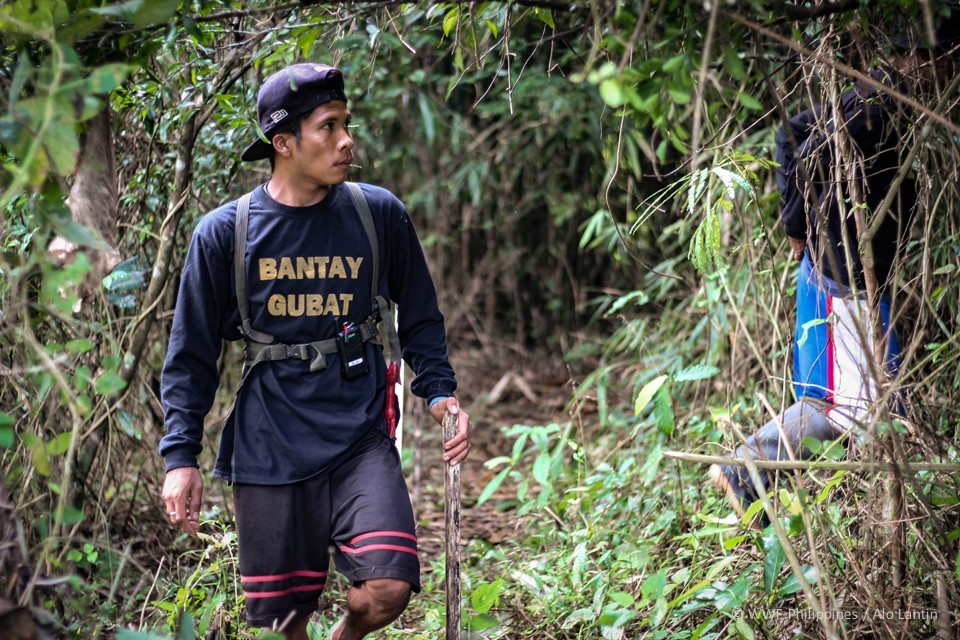
A local Dumagat, and member of the Bantay Gubat, conducts a survey of the watershed while out on routine patrol.
Photograph © Alo Lantin / WWF-Philippines
Understanding the importance of Ipo Watershed to Metro Manila and the millions who live in the metropolis, the World Wide Fund for Nature (WWF) Philippines actively works for its conservation through the Forests for Water program.
Work in the watershed first began in the Summer of 2016. Researchers took to the forests, touching base with the local Dumagat groups and scouring the surrounding watershed for data. Partners came soon after and in no time, individuals, businesses, and government institutions also got on board to support Ipo and the reforestation of the rainforest.
The first major project began when WWF-Philippines partnered with Coca-Cola Philippines for extensive forest management work. Not even a year since work began, the Forests for Water program had evolved beyond mere reforestation. Studies showed that the mere planting of trees wasn’t going to ensure the long-term protection of water resources. Good management and sound science was necessary.
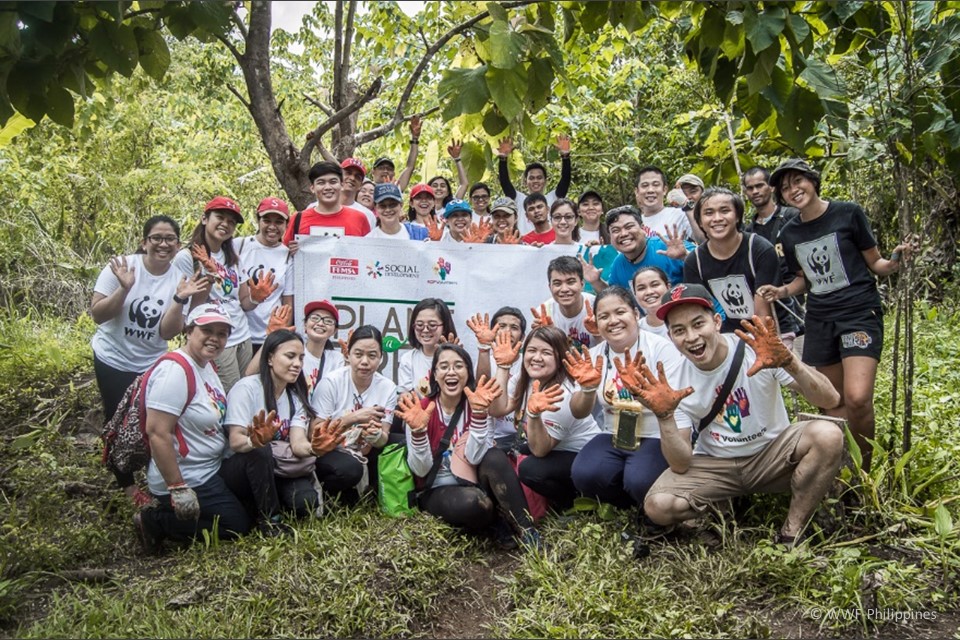
Staff from WWF-Philippines pose with volunteers after a tree planting activity. Since 2016, WWF-Philippines has worked with partners to ensure the integrity of Ipo Watershed. Photograph © WWF-Philippines
“Water security is, basically, the Why? for the work we do in Ipo Watershed, and the forestry side is the How do we do this properly?” says Paolo Pagaduan, WWF-Philippines Forests for Water Program Manager. As opposed to just the number of trees, continues Pagaduan, WWF-Philippines looks into all the factors that could affect the quality and availability of water. For instance, work also began with the local Dumagat, to make sure the program caused no harm to the locals and to supplement research data with local knowledge.
“There’s a lot that we’re looking in to. These water projects are of a different scale, more so than what one group can handle by themselves. That’s why we really need our partners,” admits Pagaduan, who has worked with partners that include corporations like Nestle Philippines, Coca Cola Philippines, Sunlife, Samsung, BDO, Arthaland, and GCash as well as government agencies like the Department of Natural Resources, the Metropolitan Waterworks and Sewerage System, the University of the Philippines College of Social Work and Community Development and other environmental advocates from across the country. The program has brought together groups and individuals from all walks of life – from a young girl looking to donate her birthday money to a cause, to tech companies and insurance agencies. WWF-Philippines works with and orchestrates these partners, directing them to different parts of the watershed’s conservation.
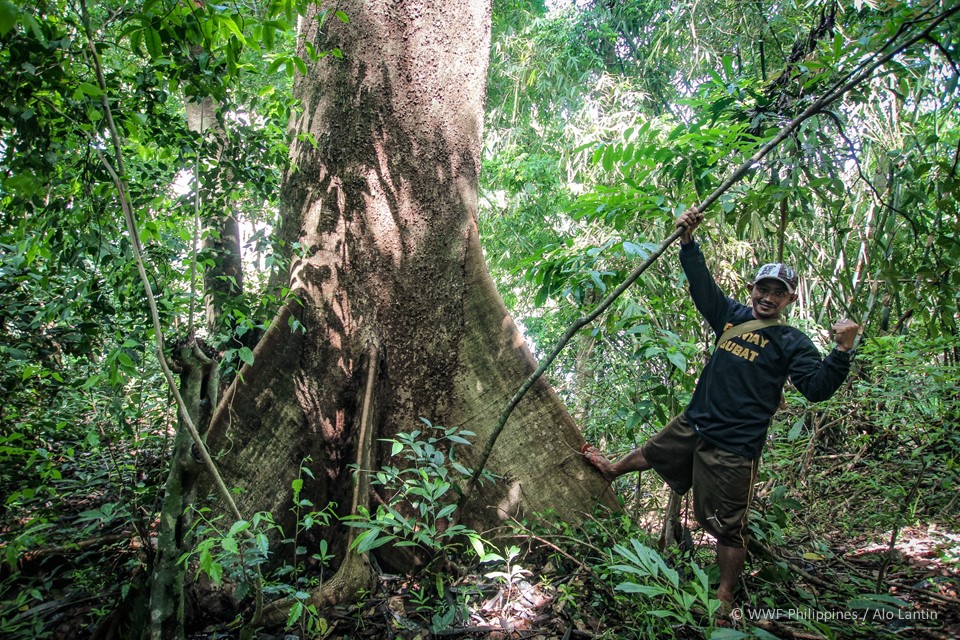
A member of the Bantay Gubat stands next to a mother tree from which saplings are collected and used for reforestation, ensuring that no foreign plants are introduced to the watershed. In Ipo Watershed, science stands at the forefront of ensuring the sustainability of the forest and of Metro Manila’s water supply. Photograph © Alo Lantin / WWF-Philippines
“This scientific approach we take allows us to plan and execute our projects on a deeper level. It helps us produce better outcomes and impacts. To be more efficient. To use our resources better. To do better projects,” says Pagaduan.
Since the program began, considerations have been made for the sustainability of the forest as opposed to its mere reforestation, looking into ways to reduce threats to the forest while assisting in its continued growth. Corporations, government partners, and good Samaritans help fund and conduct conservation work in the watershed, while the local Dumagat patrol and protect the surrounding forests, on the lookout for illegal activities. At the top sits the data collected by WWF-Philippines, acting as guidance to the conservation work done in Ipo Watershed.
“If it weren’t for the science we do, we could be getting these projects spectacularly wrong,” adds Pagaduan.
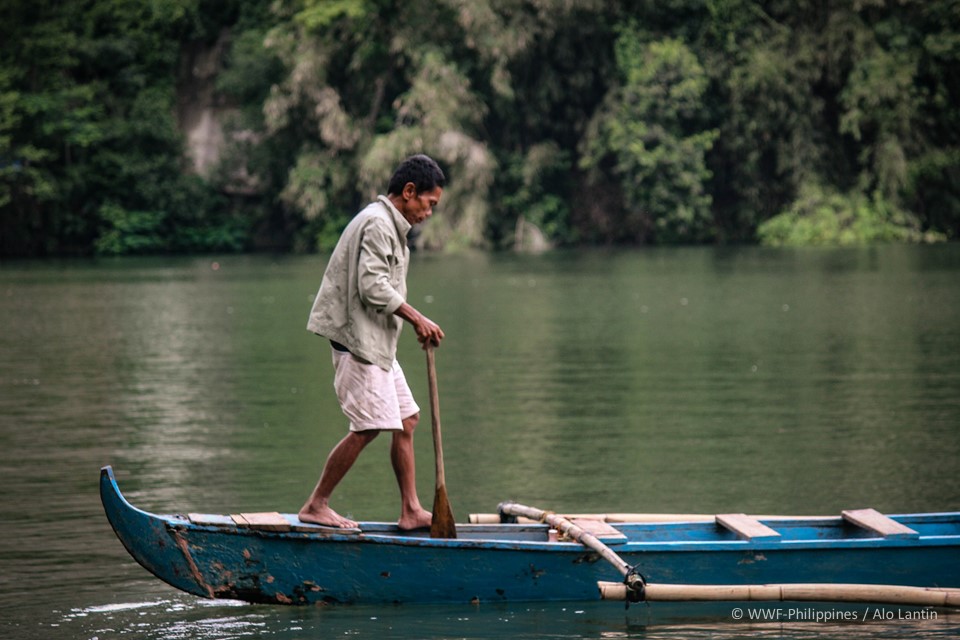
A man boards his boat before setting off down the river. Many have benefitted from the watershed, and good science ensures that this continue for years to come. Photograph © Alo Lantin / WWF-Philippines
Now moving on to its fourth year, the Forests for Water program is looking for ways to ensure the stability of Ipo Watershed for many years to come. Pagaduan explains that the next step is to develop a better management plan for the watershed that is rooted in the scientific work WWF-Philippines and partners have been doing. He hopes that this plan can then be replicated in watersheds across the country.
“What’s at stake here is the water security of Metro Manila and the surrounding provinces. We’re doing our best to make sure everyone gets the water they need, the water they deserve,” states Pagaduan. As pressure builds on our water sources, it is vital that there be methods in place to secure water for many years to come. At WWF-Philippines, good science – both natural and social – is the key to that future.
For more information, please contact:
Mr. Dan Ramirez
Communications and Media Manager
dramirez@wwf.org.ph
